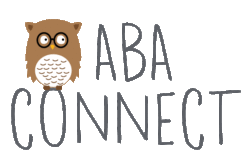Task Analysis and Chaining
A task analysis is an intervention which links a series of behaviors to create a more complex behavior chain. Constructing the intervention chain must be done BEFORE the intervention begins. One should also use the client’s repertoire for selecting appropriate interventions. An evaluation of the client’s verbal repertoire and pre-attending skills are done before the intervention.
3 ways of validating the task analysis:
- Observing a competent individual performing the sequence of behaviors
- Consulting with an expert or person highly skilled in the particular tasks to be taught
- Performing the entire sequence yourself
Forward chaining is when the first step (prompted or unprompted) is reinforced upon completion. Then the first and second steps are completed before reinforcement (or a token) is provided. This is continued until completion of all steps is required before reinforcement is offered. After the known step is complete, one waits until the next session to reinforce the subsequent step.
Backward chaining starts with assistance with all the steps except for the last step. At the last known step, that step is reinforced when correct. The reinforcement is backed up through the chain at each session, reinforcing the end of the sequence of known steps.
Total task chaining is completing the entire sequence and receiving reinforcement at the end of the completed task chain. This is most appropriate when the learner has the prerequisite skills to complete the tasks in the chain and would not require many trials to criterion based on past learned knowledge.
Behavior Chain Interruption Strategy (BCIS) is used to confirm that the subject can emit appropriate alternative behavior when one of the steps in the chaining is interrupted. An example would be Sally taught her brother Sam to make the bed by doing a behavior chain. Before he is finished, she hides the pillow cases. She waits for him to ask where the pillowcases are, or to look for them, or to go to the closet to get new ones, etc.
Behavior Chain with Limited Hold is when a person has to complete the required task within a limited time in order to produce reinforcement. For example, the burger makers at McDonald’s must complete a burger within a certain amount of time or the customer is angry.




What happened to backward chaining with leaps ahead?
There is also Single Opportunity Chaining